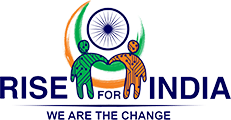Take a moment and look at all bigger brands, you will realize with every passing year organizations are becoming more complex, highly competitive, dynamic and extremely volatile. In addition to these changes mid-sized and bigger firms also struggling with issues like engagement and development of employees, talent flow, shortage of required competencies, and employee retention.
Organizations and HR managers are completely aware what has been changed and what changes we can expect in coming years. Now, the major question is what we are doing to overcome these challenges or to solve these issues.
What type of upgrade does recruitment process should get? How managers should fill the gap of talent acquisitions and talent management?
FINALLY!!! EY’s Talent trends in India survey 2014-2015 have answered some questions in their report that we will explore and learn about in this piece of article.
What should be the starting point for organizations to have better recruitment experience?
In Ernst and Young’s Talent trends in India survey 2014-2015 report, they have brilliantly mentioned “talent management” as an underestimated weapon for talent acquisition and employee retention, which several organizations lack.
Acquiring a talent for any organization has now become a war for HR managers and recruitment leaders. This scenario has obtained out of two assumptions (as mentioned in EY report) –
- Traditional sources of competitive advantage are losing their edge.
- Competent and talented candidates are becoming more demanding about the companies they select to work. Also, they have now wide accessibility to the attractive jobs.
Use of NON-CONVENTIONAL methods of SOURCING
As per the EY’s survey report, social networks like Twitter, Facebook and LinkedIn emerged as a primary non-conventional source of outsourcing. This scenario is followed by, targeted recruitment in Tier II and Tier III cities and Psychometric testing.
Employee turnover rate
Employee turnover defines the rate at which employees leave jobs in the company and are substituted by a new hire.
According to the survey report, a much less employee turnover is seen at senior and top management. However, higher employee turnover rate is observed in among employees who are into –customer-facing roles, followed by operation and production area.
Conclusion – Organizations in India are better in retaining employees at leadership level instead at junior and managerial level.
How much time organizations are taking to fill the vacancies?
In EY’s survey report it is highlighted, 75% of middle management vacancies take longer than two months to find asuitable candidate. Whereas, 14% of top management vacancies remain open for more than six months.
In less than two months, junior and managerial level vacancies are filled by organizations that include internal production and operation contributors’ vacancies and customer facing contributors.
Conclusion – The time was taken to fill these top, senior, managerial and junior vacancies could depend on the availability of skills in the market. However, this time lag does not point the effectiveness of recruitment process used by organizations.
Key ingredient for better Talent Management
Do you know what important aspect is missing in your talent management process? It is REWARD PRACTICES & PERFORMANCE MANAGEMENT.
There are various ways through which organizations achieve better reward practices and performance management, namely –
- Linkage of variable pay to individual performance
- Salaries regarding remuneration benchmarking
Conclusion – As per the survey report these practices are well placed in Indian Organizations. However, we cannot overlook the fact that with the dynamic nature of recruitment process the techniques of performance management and reward practices also need to be evolved.
This informative piece of article is written (based on EY’s Survey Report) to provide you the highlights of talent trends of Indian organizations –including, their shortcomings, the area of improvisations and how the human resource is evolving.

